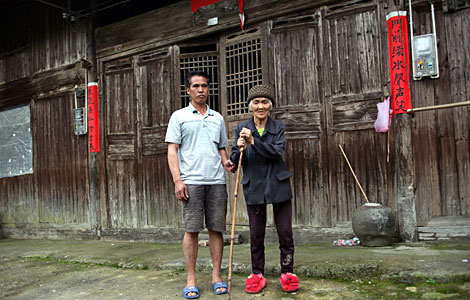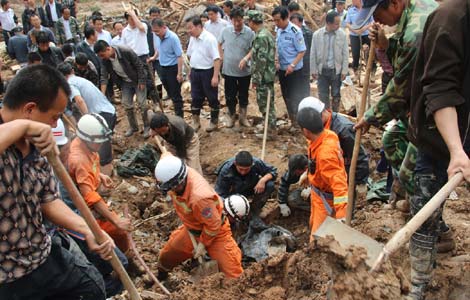
Major projects
Under the Medium- and Long-Term Talent Development Plan (2010-20), China plans to lure back 2,000 top Chinese specialists, ideally in the fields of IT, biotechnology, aerospace, environmental protection, agricultural technology and transportation.
Since the 1990s, the government has launched at least seven major projects.
From 1990 to 2010, the Ministry of Education invested 600 million yuan ($98 million) to provide seed funding for more than 20,000 returnees to do scientific research.
The CAS also launched a plan in 1994 to lure overseas Chinese scientists by offering 2 million yuan for research, which has so far lured back 1,568 top scientists.
Pan Shilie decided to return in 2007 after attending a job fair in Chicago organized by the Chinese Academy of Sciences. At the time he was three years into a postdoctoral research program at Northwestern University in the US.
"Every year, deans of research institutes affiliated to the CAS go to the US and Europe to hunt for overseas Chinese candidates," said the 40-year-old, who hails from Henan province. "After talking with employers, I realized the research platform in China is also good. But what was more important is I felt the sense of belonging. My heart never settled abroad."
Pan has been working for the CAS' Xinjiang Technical Institute of Physics and Chemistry for the past six years. After being recruited via the Hundred Talent Program, he received 2 million yuan, which included funding and a 270,000 yuan relocation allowance.
Although the incomes and benefits for domestic scientists still lag behind Western countries, he said the gap is narrowing. "China has been increasing investment in research and development, while the economic downturn in the US and Europe means my friends overseas face pressure to cut funding," he said.
In a speech in Beijing in June, Zhan Wenlong, vice-president of the CAS, said more native scientists and researchers are returning.
"Respect, care, trust and helping them to fulfill their development potential are the missions for our academy," he said.
"We work toward the goal of building an ecosystem for innovation by managing the forest that allows trees to grow in rich soil and abundant sunshine."
Zhan said his academy will also guarantee four-fifths of a researcher's time will be spent in research.
Last year, the CAS launched a 3H Project that gives favorable policies to solve researchers' concerns on housing, health insurance, and home life, such as their children's education and employment for their spouses.
However, the overall technology level in China is still lower than in the US, West European countries and Japan, said Gui Zhaoming, a professor at Wuhan Institute of Technology.
"For overseas specialists who have the aspiration to be an entrepreneur in China, lack of funding is the biggest obstacle," he said.
Favorable financial policies have been launched to help specialists come back.
Returnees can enjoy a 15 percent preferential tax policy if they start a high-tech enterprise. However, China's private equity and venture capital system hinders entrepreneurship, as regulations are underdeveloped and the nation's credit system is not fully developed, he said.
"If they can't get investment, they can never translate their ideas into a business," Gui said. "That is why they hesitate to come back."
And working in an environment that brings together different nationalities is also attractive to some specialists.
Fan Feifei, Cheng Yingqi and Zhao Xinying contributed to this story.
Contact the writers at hedan@chinadaily.com.cn and yangyao@chinadaily.com.cn








